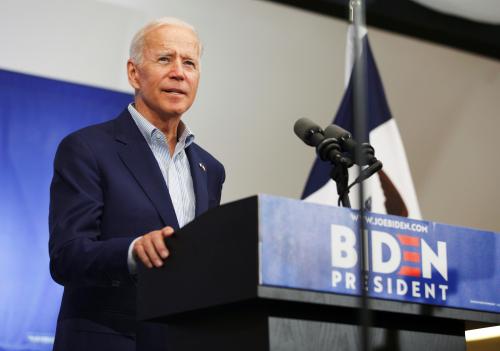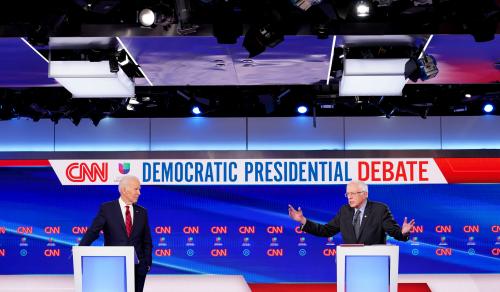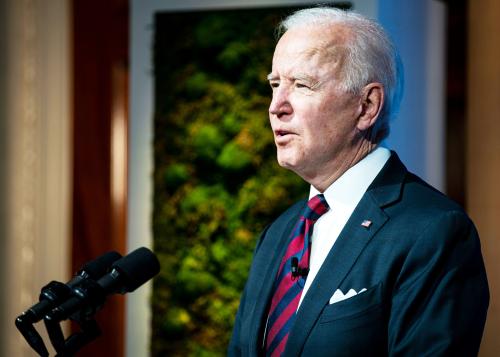On its opening night, Mark and Patricia McCloskey addressed the Republican National Convention. Although you probably can’t identify them by name, you may remember photos of the armed white couple from St. Louis who brandished their guns at Black Lives Matter protesters.
Their appearance at the Republican gathering was anything but accidental; it is central to President Trump’s re-election message, which is resurrecting themes from the 1968 “law and order” campaign of Richard Nixon. “I’m the only thing between the American Dream and total anarchy, madness, and chaos,” Trump told a group of conservative activists last week.
In a speech delivered in Scranton, PA, Joe Biden’s hometown, Mr. Trump expanded on this theme. “If you want a vision of your life under a Joe Biden presidency, imagine the smoldering ruins of Minneapolis, the violent anarchy of Portland [and] the bloodstained sidewalks of Chicago coming to . . . every single town in America,” he said.
Trump has made the political target of his comments unmistakably clear. In a tweet last Saturday, he asked, “Why would Suburban Women vote for Biden and the Democrats when Democrat run cities are now rampant with crime… which could easily spread to the suburbs, and they will reconstitute, on steroids, their low income suburbs plan!”
In case anyone missed the point, the president had this to say in a Wall Street Journal op-ed written with HUD Secretary Ben Carson: “The Biden-Sanders unity platform calls for reimposing the Obama-Biden dystopian vision of building low-income housing units next to your suburban house.” The bottom line: President Biden would pursue the suburban version of blockbusting, with equally disastrous results.
For President Trump, it’s 1968 all over again. Law and order are collapsing, and African Americans are threatening the safety of our society.
For those too young to remember 1968: in April of that year, the civil rights leader Martin Luther King was assassinated. Violent riots and looting broke out in 125 cities nationwide. These riots burned out whole sections of American cities, thirty-nine people died, more than 2600 were injured, and 21,000 were arrested.
In 1968, Richard Nixon, a former vice president who had lost his 1960 race for president, was running for president again. He crafted a campaign pronouncing himself the law and order candidate and promising that he would speak for the “silent majority.” He won.
Fast forward more than half a century, and Trump is trying to resurrect the fear of disorder and racial change that brought Richard Nixon to the White House.
But there’s a problem with Mr. Trump’s strategy: the United States has changed dramatically in the past five decades. Non-whites form a much higher share of the population, the suburbs are far more integrated, and the views of white Americans have shifted significantly. A large share of white Americans now embrace views on race relations once confined mostly to African Americans.
While Americans of all parties and races continue to oppose violent protests, appeals to “law and order” not balanced with the recognition of deep injustice lack the resonance they enjoyed half a century ago. This helps explain why barely one-third of Americans support President Trump’s handling of race relations—and why 53% of Americans say that relations have gotten worse on his watch.
76% of Americans now say that discrimination against racial and ethnic minorities in the United States is a “big problem,” including 57% of conservatives, 71% of whites, and 69% of whites without college degrees. When asked, “Which concerns you more, the actions of the police against George Floyd or protests that have turned violent?” about 6 in 10 Americans, including 54% of whites, name the police actions as their greater concern. And large majorities now favor a range of reforms to policing and criminal justice.
The McCloskeys were charged with felony unlawful use of a weapon. They allege that they have a right to own a gun and a right to defend their home and that Democrats want to abolish the suburbs altogether. They warn that “what happened to us could just as easily happen to you.”
Will voters believe them? Are the white suburban voters of 2020 as scared as the white suburban voters of 1968? Trump thinks so. I doubt it. In just 70 days we will find out who is right.







Commentary
For President Trump, it’s 1968 all over again
August 24, 2020